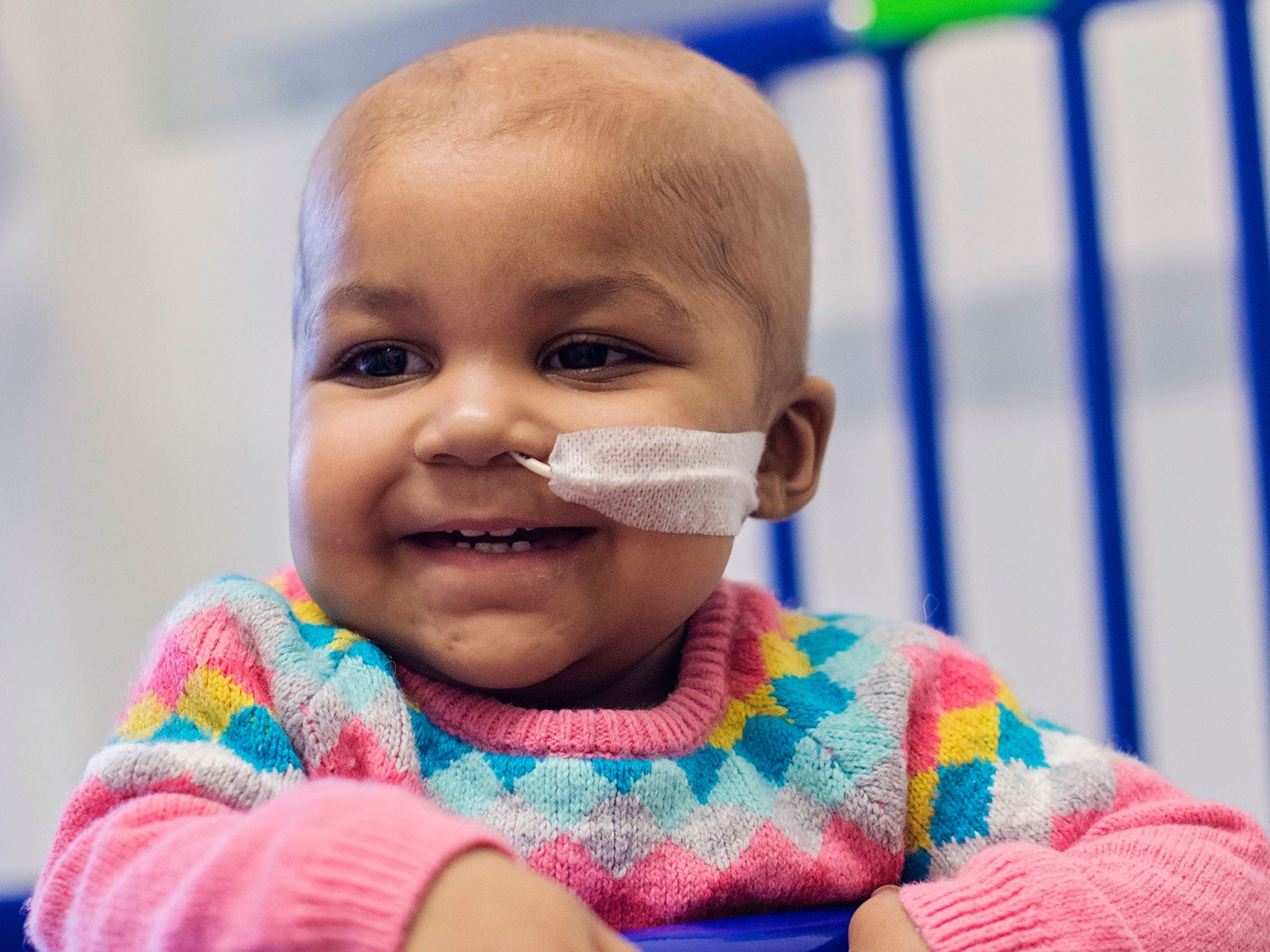How your money can help revolutionise the future of paediatric care in the UK
At Great Ormond Street Hospital, Professor Martin Elliott is pioneering procedures to help young patients
The rise of big data, gene therapy and advances in tissue engineering are set to revolutionise the way doctors treat children, says one of Britain’s leading paediatricians.
Professor Martin Elliott, 64, has been involved in groundbreaking research and treatment at Great Ormond Street Hospital (GOSH) for more than 30 years, including pioneering stem cell procedures and advances in heart transplant surgery.
In a wide-ranging interview the former medical director of the hospital said doctors would be “learning from big data” and mastering tissue engineering for 100 years, but that new advances would transform the treatment of heart failure and a host of genetic disorders. He said that paediatric care was on the threshold of an “enormous shift” as doctors “moved towards an era of more personalised medicine”.
Professor Elliott bridges the gap between surgery and research with skills ranging from heart-bypass surgery to correcting congenital lung disorders. Most recently, he combined research into stem cell therapy and new surgical techniques to carry out the first stem-cell supported tracheal transplant.
The operation, which was performed on a critically ill 13-year-old boy in 2010, replaced the patient’s trachea with a donor windpipe laced with the patient’s own stem cells so it would not be rejected.
“Essentially, tissue engineering allows us to take donor tissue, strip off the donor’s cells leaving a scaffold we can add cells from the recipient to, then marinate and stimulate with a variety of chemicals,” said Professor Elliott.
In another world first, Professor Elliott’s team inserted a biodegradable stent into the patient’s airway while the cells within the trachea regrew over the following six months.
More recently, Professor Elliott has been at the centre of GOSH’s adoption of 3-D printing techniques, using a CT scan and 3-D printers, including one at the Royal College of Art, to create accurate models of hearts and tracheas. This allows surgeons to practise complex procedures, reducing the time a child spends under anaesthetic. “The days of basing operations on snowy images on screens are long gone,” he said.
Professor Elliott, who calls on readers to give generously to the Give to GOSH appeal, said advances at GOSH came about because of the unique combination of clinical practice and research science, supported by charitable funding from the hospital’s charity.
“The striking thing about GOSH is that there is almost [always] somebody just down the corridor who knows the answer to the question you are searching for and almost every single speciality there is to do with children [who are] in the building. You never see the same thing twice.”
He admitted that there were “huge” ethical obstacles to overcome and that the NHS hadn’t always been good with data, but he said once the business world and government got to grips with the issues of privacy and big data, medicine should be ready to take advantage of the benefits.
He said: “As we move into an environment where we are able to collect information electronically simultaneously with the development of sensors, it’s not hard to see how the next generation of Apple Watch will collect not just your pulse rate, but also a whole load of stuff we are interested in.”
Professor Elliott said data from sensors on those “sticky bits” could be linked to computers to help give earlier diagnosis and decision making in paediatric care. “If an algorithm can tell us how and when to intervene with a patient, why does that patient need to be in hospital? They can lead a normal life outside it.”
Success stories: Pioneering treatment

Layla Richards was diagnosed with leukaemia when she was 14 weeks old, in June 2014. After chemotherapy was unsuccessful, it looked like end-of-life care was the only option left for her. However, a new gene-editing treatment was being developed at GOSH. It had never been tested on people, but with her parents’ permission, Layla (right) became the first. She was given a small infusion of specially designed immune cells programmed to hunt out and kill her cancer. Several months later, to the delight of her parents and everyone at GOSH, she was declared free of cancer.
Kieran Sorkin was born without ears due to a rare condition called microtia. When he was little, he wanted to be able to wear sunglasses like his friends. As a baby, he came to GOSH, which performs more ear reconstructions than any other hospital in the UK. In 2014, surgeons took cartilage from his ribs, and sculpted them into a pair of ears, using the shape of his mother’s as a template.
Ciaran Finn-Lynch was born with a narrow windpipe and had difficulties breathing. In March 2010, his windpipe was removed at GOSH and replaced with a donor windpipe laced with Ciaran’s own stem cells so it would not be rejected. The pioneering technique is now being developed to create other organs, including the bladder.
To Give to GOSH go to: http://ind.pn/1Mydxqt
To find out more about our appeal and why we're supporting GOSH go to: http://ind.pn/1MycZkr
Join our commenting forum
Join thought-provoking conversations, follow other Independent readers and see their replies
Comments